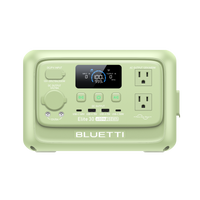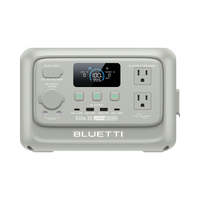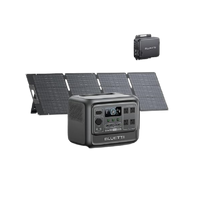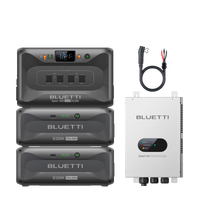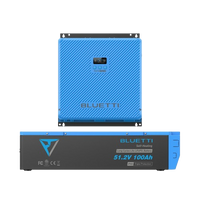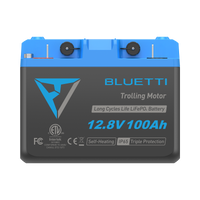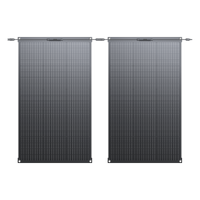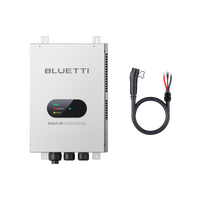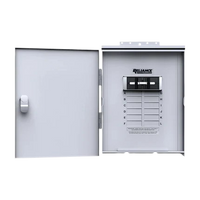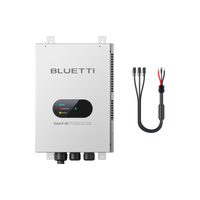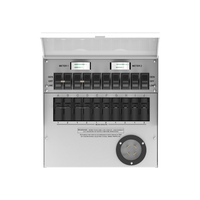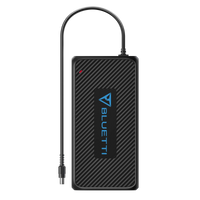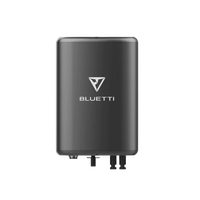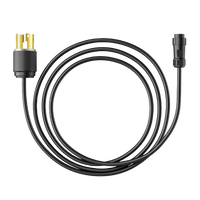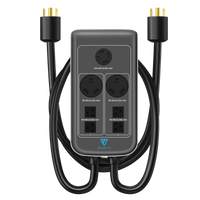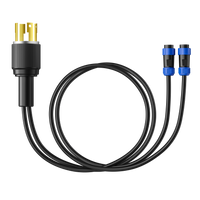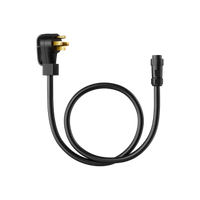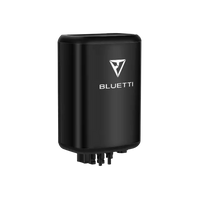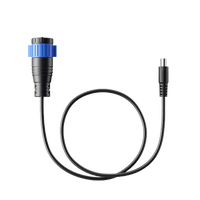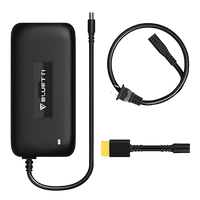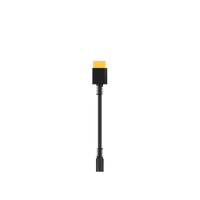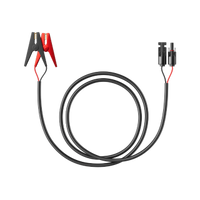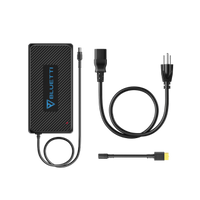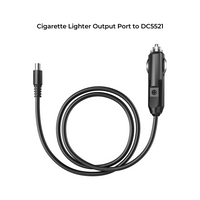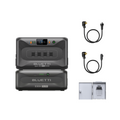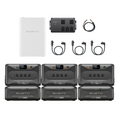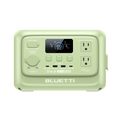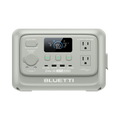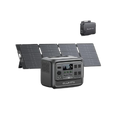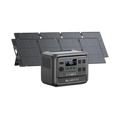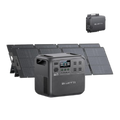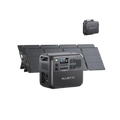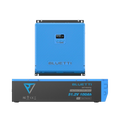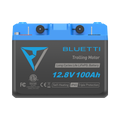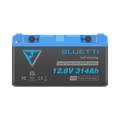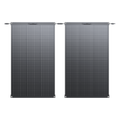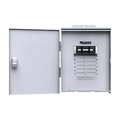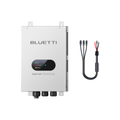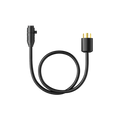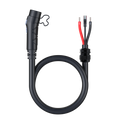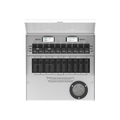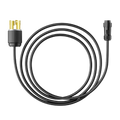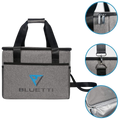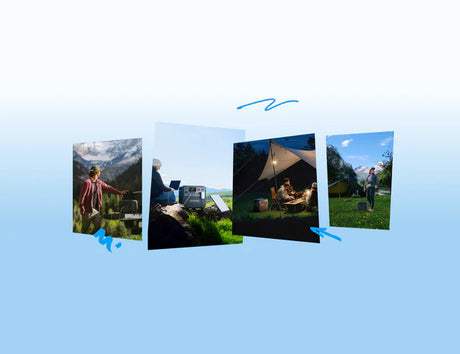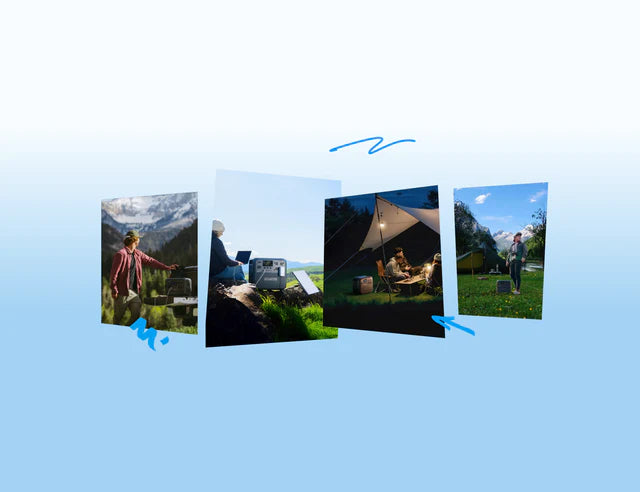With the newest solar battery storage technology in Canada, homes can now store energy generated through their solar systems. However, does that mean you can start living off-grid?
Going off the grid means a business or home generates renewable energy, has enough storage to meet all its energy needs, and can disconnect from the power grid. But how does this work and where do you begin with building an off-grid cabin? This article will get you started.
Solar battery storage plays a crucial role in making a cabin off-grid ready. The battery stores the unused energy produced by your solar panels during the day. Instead of going back to the grid, you can use the electricity at night when your solar panels aren’t generating energy.
The way people produce and use energy has substantially shifted over the past decade. With solar panels and battery storage technology advancing as quickly as it has, the conversation around off-grid living has become more complicated.
What does living off the grid indicate? Can you go off-grid with solar? Is it legal? Let’s find out!
What is an Off-Grid Cabin?
An off-grid cabin is a home that’s not connected to the rest of the civilization as most homes are. Unlike many city apartments and suburban homes, these cabins are self-sufficient in one or more utilities such as power and water.
How Does Off-Grid Cabin Living Work?
Living off-grid means living separately from public utilities. That means you must produce your power, gather and purify your water, grow, forage and preserve your food. You also need to find your method of disposing of your waste.
Off-grid cabin living offers you total freedom in setting your ways of life, and there is no wrong and right way to do that. Everything depends on your particular needs and situations.
Most people prefer to go into the woods and live in the wilderness because they know what is going on and have chosen that living sustainably is another way to save it.
But keep in mind that there are numerous ways to go off-grid. You may prefer to go off-grid and have no connection to public utilities. On the other hand, you may prefer to be partially off-grid. That means you still depend on some public utilities but collect or generate most of your food, water, and energy.
The Pros and Cons of Living Off-Grid

Going off-grid can be the best decision you have ever made. However, it is far from being simple. Remember that while going off-grid comes with many benefits, there are some drawbacks.
The Pros
- You will become more self-reliant – You will experience a world you didn’t think existed by going off-grid. You also become self-reliant throughout the process.
- It’s eco-friendly – Living off-grid is 100% more eco-friendly than living on the grid as you do not depend on fossil fuels.
- It’s cost-efficient – Another benefit of living off the grid is that you can save money in the end, although it’s a fact that it can be challenging at first.
- Total independence – One of the major benefits of going off the grid is that it provides independence from different public utilities.
The Cons
- Maintenance – One disadvantage of living off the grid is that you need to maintain your systems. It should be done regularly.
- The initial cost is expensive – As you may know, finding a way to get off the grid and begin the process is always the most difficult. It’s quite expensive as you need to set up your water, power, and waste disposal systems.
Types of Off-Grid Cabin
An off-grid cabin can look different depending on the region or area. For instance, it can look like a mobile home, a cabin, or even a huge tent.
Here are some of the types of off-grid homes you can consider today.
- A log cabin
A log cabin that you often consider a sustainable, off-grid home is a cliché today. Nonetheless, that does not indicate it is not a great option, especially if you are not a retired green beret or navy seal waiting to be recalled for a secret mission.
Something so classic about a log cabin makes a huge off-grid home.
- Shipping container cabin
A shipping container cabin is a minimalist. It nearly looks like a piece of modern art. It also offers massive spaces and can be positioned and moved anywhere you want it to be. Cool, right?
- Earthship cabin
An Earthship cabin is named such as it looks like a ship from outer space. This kind of cabin is designed from recycled materials such as aluminum cars, used rubber tires, and glass bottles.
Earthships also often utilize thermal mass as a natural air conditioner. Therefore, you stay toasty and warm in the winter and cool in the summer. You can build such about anywhere in the world in any climate.
- Bamboo cabin
Bamboo cabins are often seen near holiday resorts or at the beach. They have awesome strength because of the material used and are the perfect home for an energy-efficient off-grid cabin.
- Cob cabin
A cob house will remind you of the cabins featured in the Grimm Brothers fairy tales. Nonetheless, this one perhaps will not have a hungry and ugly witch.
A cob cabin can be as small or as big as you need it to be. Nonetheless, it does need some maintenance, but it could last for many years with the proper work.
Where Can I Build an Off-Grid Cabin?

Let’s say you decided to take the first step. You want to experience a sense of independence and liberty by living off the grid. The first question that will pop into your mind is where you should begin your off-grid lifestyle.
Theoretically, you can live off the grid almost anywhere in the globe. However, there are certain factors you must consider, such as:
- Water source
Going off the grid means separating from the city’s water lines. It will help if you purchase land near a stable and clean water source. That could be a spring, a river, a lake, or even a place that functions well. After all, you can’t survive without clean water.
- Climate or weather
Others prefer the changing season, while some would like nice weather throughout the year. Determine what climate suits you the most and the challenges you might encounter in the hot summer, cold winter, when it rains, or when a tornado passes by.
For instance, you can use a website such as https://www.currentresults.com/Weather/Canada/Cities/average-canadian-city-weather.php for research and look under Historical Weather for that place that interests you. If natural disasters frequent the place, then maybe it is not worth the trouble.
The number of sunny days can also impact whether you must go for off-grid or on-grid solar.
- Living expenses
Even if you’re planning to make your food and other materials, there will be something you need to purchase from your local shopping center. You could spend more on the equipment before you notice your first vegetables sprout.
Take time to research the cost of living within the state of your interest and determine how you can afford it.
- Land cost
That is not only about looking for a price that fits your budget. Remember that a price tag for the land could hint at its quality. A too cheap land could mostly be a desert or a swamp.
You must go for land with natural resources and has an agricultural quality. Consider buying a smaller lot and investing money into the equipment and structure.
- Laws and regulations
Nice people and nice weather cannot enhance your off-grid life if the local laws are restrictive. Before moving to your off-grid home, ensure you can accomplish everything planned.
Do the local laws enable making a house that is not connected to the power grid? Will you be penalized if your home isn’t connected to the sewage system? What are the building codes in the area? Do they require that you use only specific materials when creating a cabin?
Laws aren’t the same in all areas, and others don’t often fit the off-the-grid lifestyle.
- Local community
It is smart to settle in a place populated with like-minded and dependable neighbors. Those could be your newest friends, helping you with their information and knowledge about the area, and be willing to barter goods and services with you.
- Property taxes
Those could take a major chunk of your budget, so always pick a location accordingly. Taxes can also impact your decision about the land’s size. A big land can be zoned as agricultural, so you will pay less tax. However, you must pay more upfront when you buy the land.
Meanwhile, a smaller, cheaper lot marked as a residential area will have higher property taxes.
How to Build an Off-Grid Cabin?
Deciding to go off the grid does not mean only packing some items and embarking on the journey—you must get thoroughly advised about everything you need for going off-grid. That’s why we gathered a list of the essentials you will need for this awesome lifestyle.
- Placement is key
One of the most crucial things you need when building an off-grid cabin is the land where you can create your home, grow your food, and collect your water. Remember that the amount of land you need depends on several factors like the ones we mentioned earlier.
Nonetheless, a good rule of thumb is to have at least one acre of land per person.
- Power sources
So how exactly will you get the juice flowing out of your off-grid paradise? You have a few options, each with its pros and cons.
- Renewable power. It’s often the most preferred solution. Even people living in the city have started opting for wind and solar energy. Solar panels are often the most typical option.
The solar cells are much more efficient and can run much anything you need. But of course, high-powered heaters and air conditioners are another stories. Still, you always have the option to store energy for use on a rainy day with solar panels.
- Non-renewable power. Other people who prefer to live off the grid choose non-renewable power. That’s hardly sustainable, but it can be energy efficient. You can have a small generator powering your cabin with limited pollution and use methane or propane to heat water and cook.
- Water supply
Water supply is the third thing you must plan for when living off the grid. Homeowners use different methods here, including harvesting rain and wells.
Wells are the most typical since they offer an unlimited supply of naturally replenished water. Hence, saving on costs year-round. They can provide clear, clean water for a few decades, and if you use it responsibly, you can make the well last much longer.
- Waste management
Finding a way to dispose of your wastewater and garbage is something you must consider. After you unplug from the real world, you will also need a disposal waste system.
Follow the federal and local guidelines on waste disposals system—even though leaving your waste in a hole to later be used as a power source or fertilizer would be an excellent solution, you must learn that most federal guidelines do not permit it.
- Heating and cooling
Heating your off-grid cabin falls into types: electric, gas, and wood heating. Gas and wood heating are the same systems. Gas stoves often offer the option of propane as well as other types of gas.
- Construction costs
Building an off-grid cabin often costs at least $70,000 to build. That’s a tough estimate and doesn’t include the cost of water and electricity you will need to provide for yourself.
Adding the cost of such elements and your price increases to at least $140,000. Further expenses appear in garden supplies, a septic system, and livestock, bringing the average total to about $300,000.
Final Thoughts
There’s no doubt that living off-grid is an excellent way to become more self-reliant and independent. Nonetheless, it does require some preparation and planning. Before making the switch, ensure you have all the important things covered. Like the necessary solar panels and back up batteries. Check out Bluetti for all our gear to make your off grid cabin a reality.
Shop Bluetti for all your solar needs!














